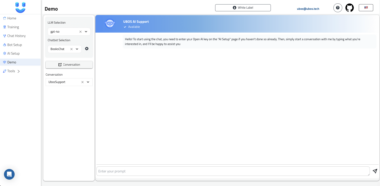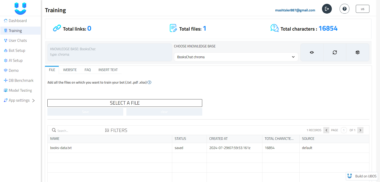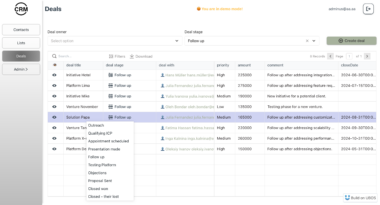MCP Ethereum Address Info Server
This server provides information about Ethereum addresses across multiple chains using the Model Context Protocol (MCP). It includes a Server-Sent Events (SSE) endpoint for real-time updates.
Table of Contents
- Setup
- Running the Server
- Available Endpoints
- Using the SSE Endpoint
- Testing with Curl
- Example Workflow
Setup
Clone the repository:
git clone <repository-url> cd mcp-0x-addressInstall dependencies:
npm installCreate a
.envfile with the following variables:MCP_PORT=3002
Running the Server
Start the HTTP MCP server:
npm run start:http
This will start the server on port 3002 (or the port specified in your .env file).
Available Endpoints
The server provides the following endpoints:
GET /health- Server health checkPOST /mcp- MCP endpoint for tool callsGET /sse- Server-Sent Events endpoint for real-time updatesGET /sse/clients- Get information about connected SSE clientsPOST /sse/subscribe/:clientId- Subscribe to address updatesPOST /sse/unsubscribe/:clientId- Unsubscribe from address updates
Using the SSE Endpoint
The SSE endpoint allows clients to receive real-time updates from the server. Here’s how to use it:
- Connect to the SSE endpoint
- Get your client ID from the connection response
- Subscribe to specific addresses
- Receive real-time updates for those addresses
Testing with Curl
1. Connect to the SSE Endpoint
curl -N http://localhost:3002/sse
This will establish a connection to the SSE endpoint and start receiving events. The connection will remain open until you manually terminate it.
2. Check Connected Clients
curl http://localhost:3002/sse/clients
3. Subscribe to Address Updates
After connecting to the SSE endpoint, you’ll receive a client ID. Use that ID to subscribe to address updates:
curl -X POST
http://localhost:3002/sse/subscribe/YOUR_CLIENT_ID
-H "Content-Type: application/json"
-d '{"addresses": ["0x742d35Cc6634C0532925a3b844Bc454e4438f44e", "0xC02aaA39b223FE8D0A0e5C4F27eAD9083C756Cc2"]}'
Replace YOUR_CLIENT_ID with the client ID you received when connecting to the SSE endpoint.
4. Unsubscribe from Address Updates
curl -X POST
http://localhost:3002/sse/unsubscribe/YOUR_CLIENT_ID
-H "Content-Type: application/json"
-d '{"addresses": ["0x742d35Cc6634C0532925a3b844Bc454e4438f44e"]}'
5. Trigger an Address Update
To trigger an address update (which will be sent to subscribed clients), call the get-address-info tool:
curl -X POST
http://localhost:3002/mcp
-H "Content-Type: application/json"
-d '{
"jsonrpc": "2.0",
"id": 1,
"method": "tools/call",
"params": {
"name": "get-address-info",
"arguments": {
"address": "0x742d35Cc6634C0532925a3b844Bc454e4438f44e"
}
}
}'
6. Check Server Health
curl http://localhost:3002/health
7. Test the Ping Tool
curl -X POST
http://localhost:3002/mcp
-H "Content-Type: application/json"
-d '{
"jsonrpc": "2.0",
"id": 1,
"method": "tools/call",
"params": {
"name": "ping",
"arguments": {}
}
}'
Example Workflow
Here’s a complete workflow for testing the SSE functionality:
Start the server:
npm run start:httpIn a new terminal, connect to the SSE endpoint:
curl -N http://localhost:3002/sseYou’ll receive a response like:
data: {"type":"connection","clientId":"client-1234567890abcdef","message":"Connected to MCP SSE endpoint","timestamp":"2023-01-01T00:00:00.000Z"}Note the
clientIdfrom the response.In another terminal, subscribe to address updates:
curl -X POST http://localhost:3002/sse/subscribe/client-1234567890abcdef -H "Content-Type: application/json" -d '{"addresses": ["0x742d35Cc6634C0532925a3b844Bc454e4438f44e"]}'Trigger an address update:
curl -X POST http://localhost:3002/mcp -H "Content-Type: application/json" -d '{ "jsonrpc": "2.0", "id": 1, "method": "tools/call", "params": { "name": "get-address-info", "arguments": { "address": "0x742d35Cc6634C0532925a3b844Bc454e4438f44e" } } }'In the terminal where you’re connected to the SSE endpoint, you’ll see updates for the address.
Automated Testing Script
For a more automated test, you can use this bash script:
#!/bin/bash
# Start SSE connection in the background and capture the output
curl -N http://localhost:3002/sse > sse_output.txt &
SSE_PID=$!
# Wait a moment for the connection to establish
sleep 2
# Extract the client ID from the output
CLIENT_ID=$(grep -o '"clientId":"[^"]*"' sse_output.txt | head -1 | cut -d'"' -f4)
if [ -z "$CLIENT_ID" ]; then
echo "Failed to get client ID"
kill $SSE_PID
exit 1
fi
echo "Connected with client ID: $CLIENT_ID"
# Subscribe to an address
curl -X POST
http://localhost:3002/sse/subscribe/$CLIENT_ID
-H "Content-Type: application/json"
-d '{"addresses": ["0x742d35Cc6634C0532925a3b844Bc454e4438f44e"]}'
echo "Subscribed to address. Waiting for updates..."
echo "Press Ctrl+C to stop"
# Keep the script running to see updates
tail -f sse_output.txt
# Clean up on exit
trap "kill $SSE_PID; rm sse_output.txt" EXIT
Save this as test_sse.sh, make it executable with chmod +x test_sse.sh, and run it with ./test_sse.sh.
Ethereum Address Info Server
Project Details
- doronaviguy/mpc-0x
- Last Updated: 3/16/2025
Recomended MCP Servers

Your AI second brain. Self-hostable. Get answers from the web or your docs. Build custom agents, schedule automations,...
Universal Test Automation MCP Server with self-healing capabilities and Smithery.ai integration
A Model Context Protocol (MCP) server for accessing the Climatiq API to calculate carbon emissions. This allows AI...

A Desktop Chat App that leverages MCP(Model Context Protocol) to interface with other LLMs.




A task management system built with Cloudflare Workers
An MCP server that provides real-time cryptocurrency news sourced from NewsData for AI agents.

MCP tool that lets Cline inquire about a code base


 From vibe coding to vibe deployment. UBOS MCP turns ideas into infra with one message.
From vibe coding to vibe deployment. UBOS MCP turns ideas into infra with one message.





